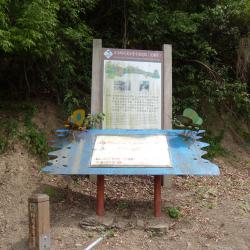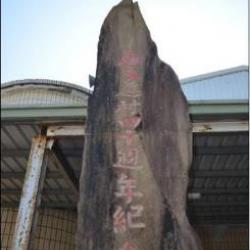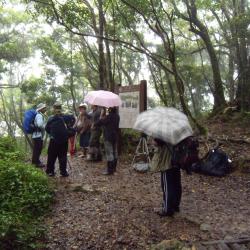The prefectural boundary between Kaohsiung State (now Kaohsiung City) and Taito Prefecture (now Taitung County) during the Japanese occupation is located 2.6km away from the sign for Jinshuiying National Trail. It is also the tip of the terrain slope because it is uphill from the entry on Dahan Forest Road to the boundary, then it goes all the way downhill. According to the Forestry Bureau information board, when the Governor-General in Taiwan patrolled Jinshuiying Trail from Taito Prefecture during the Japanese occupation, the Officials of Kaohsiung State would greet him at the boundary. Moreover, due to the fog and rain all year round and the landscape of the terrain the trail accumulates water easily. Hence the name ‘Jinshuiying’, which means Soaking Camp.
paiwan

The Kantouying ruins, located in Xinkai Village, Fangliao Township, Pingtung County, was the starting point of the Jinshuiying Historic Trail during the Japanese occupation period. It was built on March 29, 1907. To this day, there is still a stone-built barracks from the Qing Dynasty period in the ruins, which is currently used as a warehouse. Part of the original appearance of the barracks can still be seen from the stone foundation. During the Japanese occupation, the Kantou Police Post was set up at the former site of Kantouying as entry was regulated. Due to private renting on the former site today, the Forestry Bureau changed the starting point for Jinshuiying National Trail to enter from Xinkai nursery garden, and set up an information board.

Yongsen Hamlet or Mulinaga is located in Daren Township, Taitung County. The hamlet was formed by the migration of people who originally lived in old Dagu and neighboring Gutanas and Enivaian hamlets in 1953. Due to the inconvenience of living in a steep mountainous area , the tribesmen of old Dagu hamlet chose to live on the land where Morinaga Hoshinaen Co. Ltd. specialized in planting quinine, coffee and tea during the Japanese occupation.
The traditional Paiwan name of old Dagu is Tjarilik, which means steep mountains, while the traditional place name, Gutanas, means the hamlet on the cliffs, and Enivaian refers to the place where there are sacred and big trees. The name of the current hamlet is Yongsen or Mulinaga, which is taken from the farm’s name “Morinaga”.
